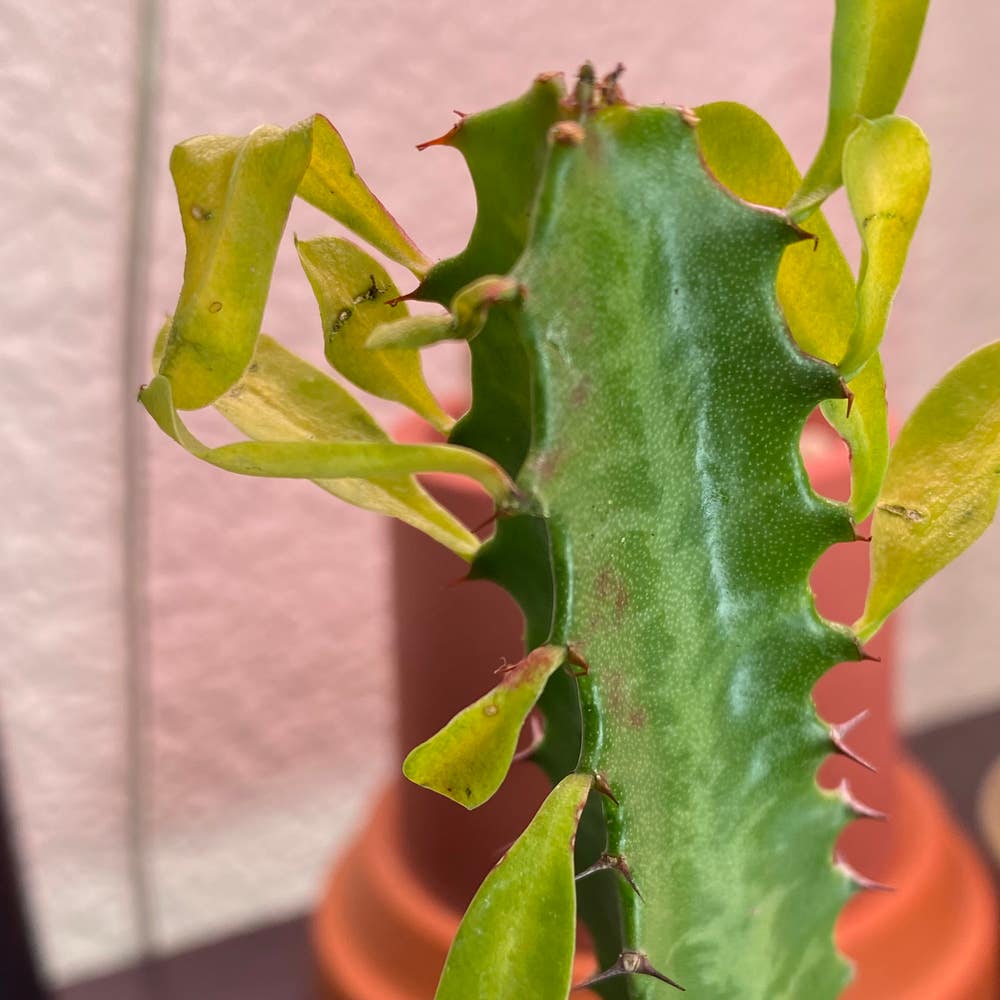How to Know When to Repot a Euphorbia jolkinii?
Apr 17, 2024•4 min read
Revitalize your Euphorbia jolkinii's growth 🌵 by spotting the perfect time to repot with our expert guide!
- Roots visible at drainage holes? Time to repot your Euphorbia jolkinii.
- Choose terracotta for breathability or plastic to retain moisture.
- Monitor for transplant shock post-repotting, then resume regular care.
Spotting the Telltale Signs for Repotting
🌱 Root Tango: When Roots Outdance the Pot
Roots should be the hidden support system of your Euphorbia jolkinii, not escape artists. If you spot roots poking through the drainage holes or circling the pot's interior like a miniature racetrack, it's time for a repot.
💧 Water Woes: Drainage and Hydration Red Flags
When water sits atop the soil like a lazy frog or zips through faster than a teenager late for curfew, it's a sign. Slow drainage or rapid drying indicates a root-to-soil ratio that's out of whack. Your plant's thirst isn't being quenched properly.
🌱 Growth Grumbles: When Your Plant Stops Thriving
If your Euphorbia jolkinii's growth has hit a standstill, with no new leaves or stems in sight, it's not just being stubborn. Stunted growth is a cry for help, signaling that it's time for a new, roomier residence.
The Great Move: Repotting Your Euphorbia jolkinii
🌱 Prepping for the Pot Swap
Timing is critical. Aim for spring or early summer when Euphorbia jolkinii is in its growth stride. Clear your workspace, gather your tools—a new pot, potting mix, trowel, scissors, and gloves to protect against the sap.
🌿 Step-by-Step: Uprooting with Care
Gently does it. Ease the plant out, supporting its base. If it's stubborn, a knife around the pot's edge can help. Inspect the roots—healthy ones are white or light-colored. Snip the sad-looking roots with precision.
🏡 Home Sweet Home: Planting in the New Pot
Soil is key. Mix a well-draining, gritty potting mix to encourage robust growth. Center your Euphorbia in the new pot, ensuring it's not too deep or shallow. Firm the soil gently around the base without compacting it.
Picking the Perfect Pot
💦 Material Matters: Balancing Breathability and Moisture
Terracotta pots are the breathable champs of the plant world, wicking away moisture and preventing root rot. They're ideal if you tend to overwater, but they'll need more frequent watering due to their porous nature. Plastic pots are your low-maintenance pals, holding moisture longer and saving the day if you forget to water. However, they can turn into mini swamps if you're too generous with the watering can. Ceramic pots are the stylish middle ground, offering moderate breathability and a variety of designs to suit your fancy. Drainage holes are a must, turning potential swamps back into suitable homes for your plants.
🌱 The Right Mix: Soil and Potting Mix Essentials
For Euphorbia jolkinii, think well-draining and gritty. A mix of potting soil, peat moss, and perlite or coarse sand is the dream team, providing moisture without the muck. Aim for a soil pH that's neutral to slightly acidic, and consider adding amendments like compost for a nutrient boost. This combo creates the perfect playground for roots to thrive without the fear of waterlogged nightmares.
Post-Repotting Care: Helping Your Plant Settle In
🌱 The First Few Weeks: Monitoring and Adjustments
After the repotting hustle, your Euphorbia jolkinii needs some chill time. It's not just about sticking it in new soil and calling it a day. You've got to play plant detective and watch for clues that your green buddy is adjusting—or not.
💧 Watering Regimen Adjustments
Water your plant thoroughly once post-repotting, then let the top inch of soil dry out before the next watering. Overwatering is a rookie move; it's better to err on the side of too dry than too wet. If your plant's leaves droop like it's had a long day, cut back on the H2O. If the soil's drier than your humor, it's time to up your watering game.
🚨 Signs of Transplant Shock
Keep an eye out for the sad signs of transplant shock: drooping leaves or a dull, just-got-dumped look. If your plant's still throwing a pity party after a week, it's time for an intervention. Yellow or brown leaves mean it's time to reassess your care strategy.
When to Resume Regular Feeding and Care Routines
Hold off on the fertilizer for the first few weeks. Your plant doesn't need a nutrient-packed buffet right after moving day. It's like expecting someone to hit the gym right after a big move—let it settle first. Once you see new growth, that's your green light to resume regular feeding and care routines. Keep the temperature and light consistent, like a comfy pair of old jeans, to avoid shocking your plant's system. And remember, patience is key; your Euphorbia jolkinii is tough, but it's not a superhero.


